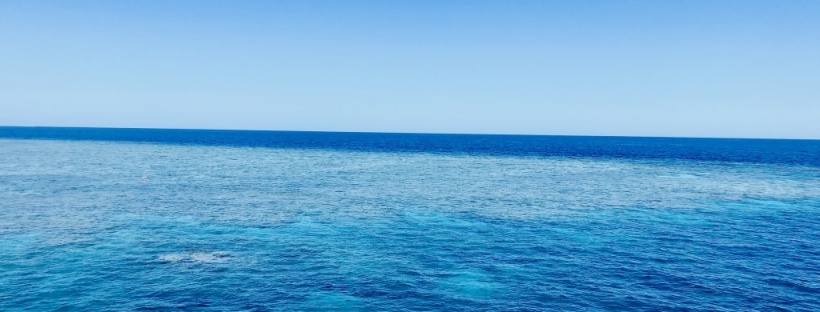When we’d returned our microvan and finished our time in New Zealand, Shane and I flew back to Australia. We had a few weeks to spare before we continued travelling east across the Pacific Ocean, and we wanted to spend them in Australia’s sunshine state: Queensland.
This wasn’t our first visit to Queensland on this trip. We had already stayed in Cairns, Brisbane and the Gold Coast, but since we’d spent our time gardening, applying for jobs and generally finding our feet the first time round, we decided to return to soak up the sun, cruise around tropical islands and dive on the Great Barrier Reef.
We spent our first few days enjoying the hospitality of our friends. First we paid another visit to Brooke, Luke and their son Emmett, where we re-acclimatised to the Gold Coast’s warmer weather, swam in Currumbin Creek and helped little Emmett to fine-tune his new walking skills. Next we drove for a couple of hours up to the Sunshine Coast, where we stayed with our friend Lee and his new wife Amanda in their beachfront apartment, and enjoyed the sunshine, sea and food in their local surf club.
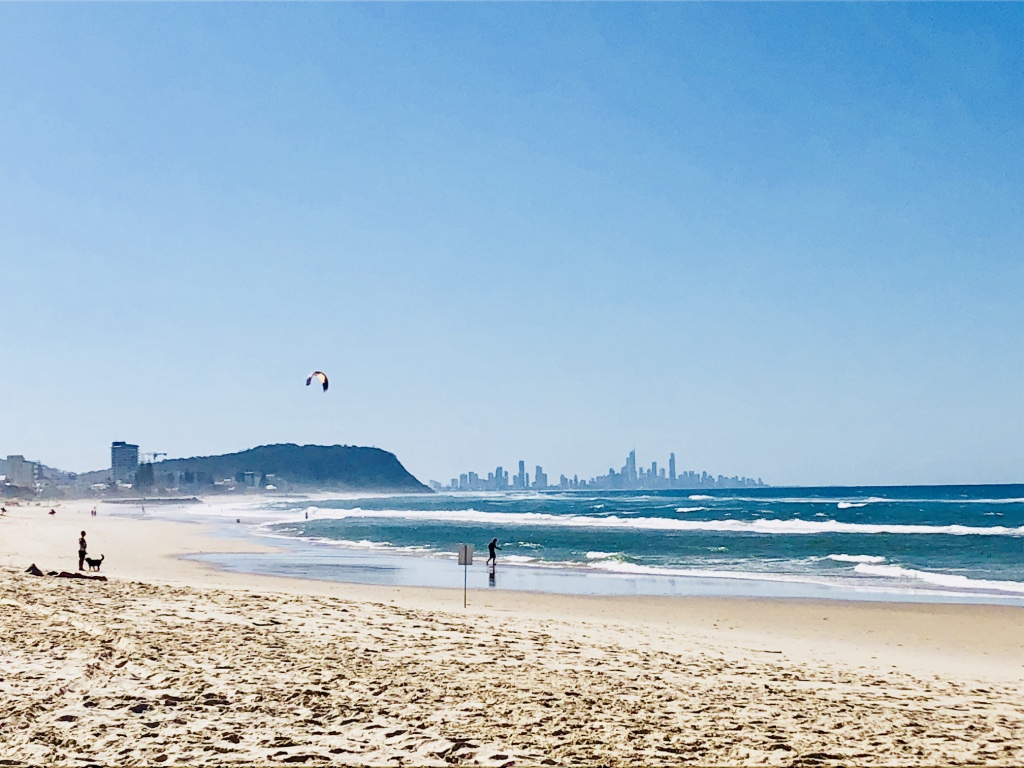
Back at the Gold Coast
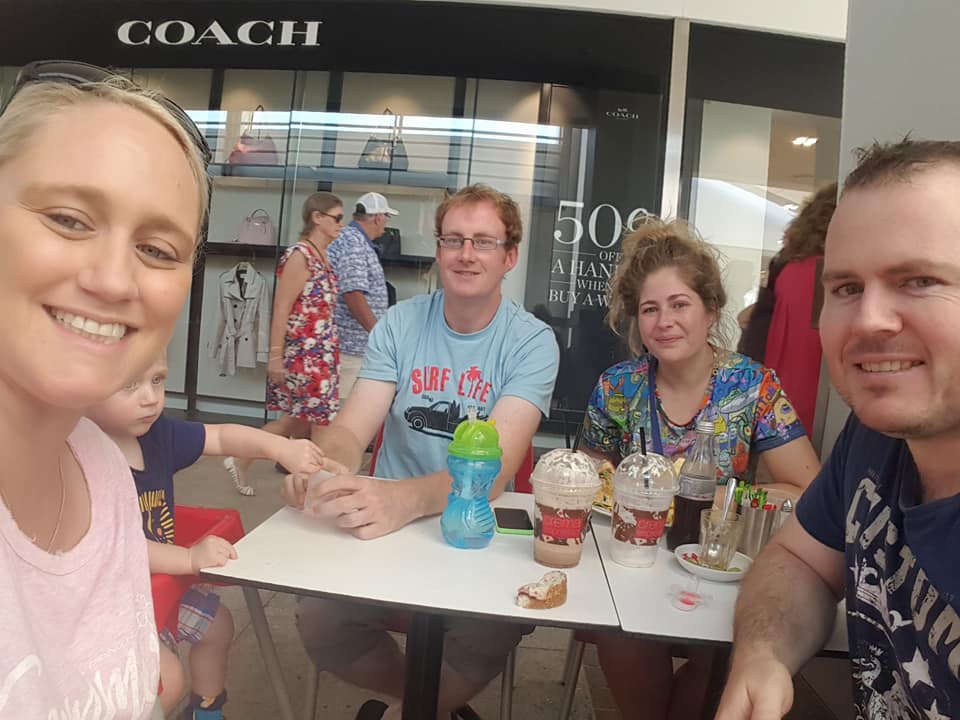
Shane and I with Emmett, Brooke and Luke
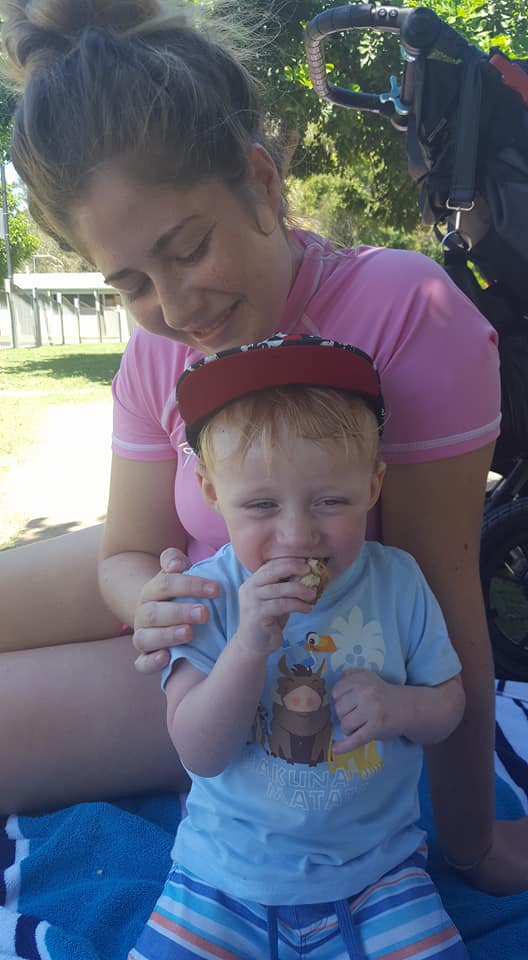
Bonding with Emmett
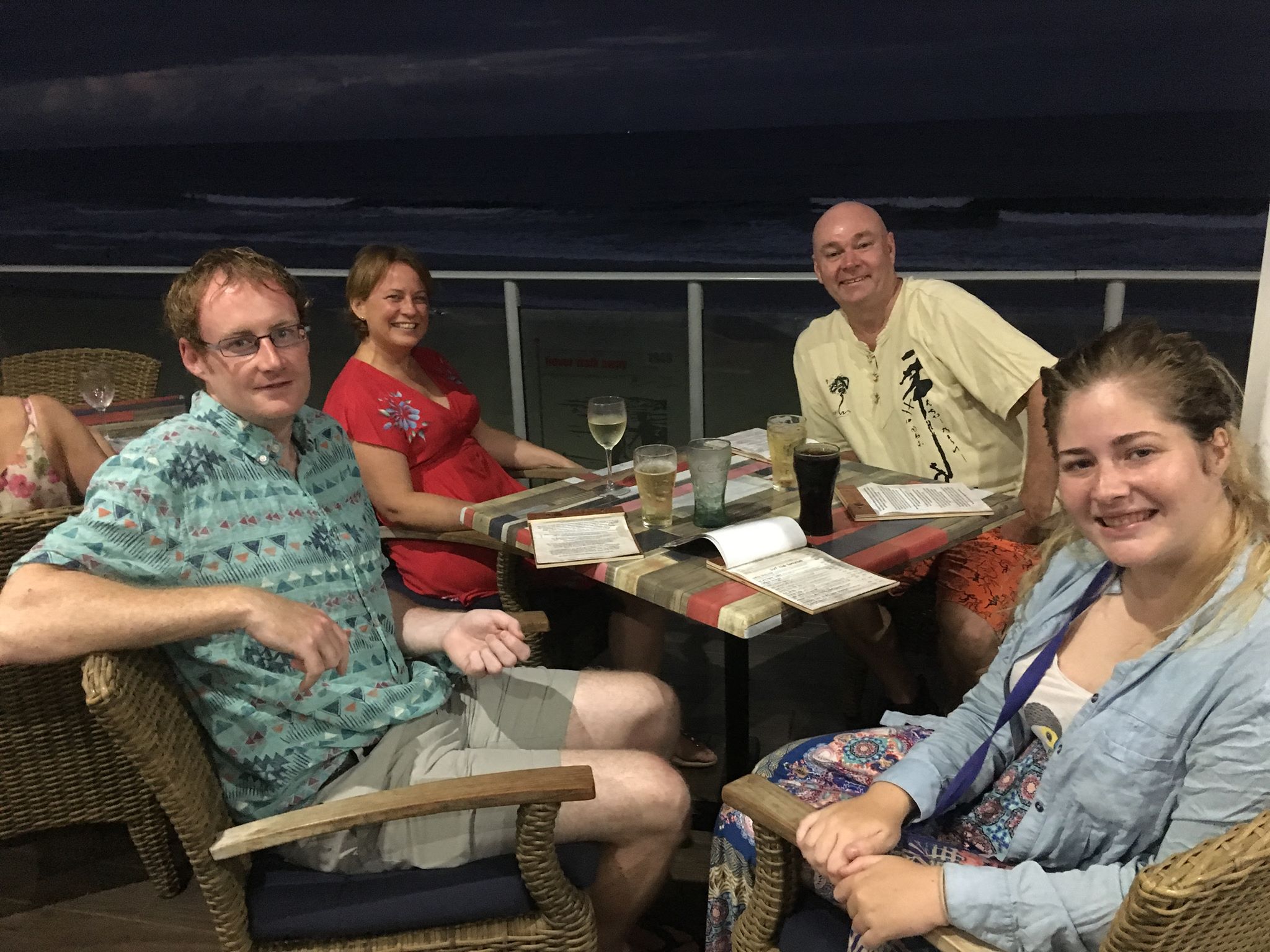
With Lee and Amanda in the Sunshine Coast
After a leisurely walk around the beaches of Noosa Heads, we continued driving north. Our next stop was Rainbow Beach, a pretty (and deserted) beach, with colourful sands, beautiful sunsets and a thriving backpacker community. We used Rainbow Beach as a base to explore nearby Fraser Island; the largest sand island in the world.
Despite what we know about the abilities of a small car to conquer any terrain, we weren’t allowed to take our little hired Hyundai i20 onto Fraser Island to drive around ourselves, as it was deemed unable (by both the rental company and by the Fraser Island rulebook) to handle the sand. Our options were limited to hiring a four-wheel drive vehicle ourselves (very expensive), or taking a tour in a big four-wheel drive bus.
Having had plenty of off-road and sand adventures just a few short months ago, we decided to save the money and take the sand-bus. This worked out well – we were picked up from Rainbow beach, taken on the ferry and shown the best spots on the island. We even got a free (well, included) lunch. As well as driving along the beach, one of the highlights was a visit to Lake Mackenzie: a ‘perched’ lake, which contains only rainwater, is not fed by rivers or streams, and does not flow to the ocean. The sand at the bottom of the lake is pure silica, which is beautifully white, soft and powdery, and stops the rainwater from draining away, while the water in the lake is so pure that most animals can’t live there. Not content with a little paddle in the lake, I decided to get some exercise and swim over to the opposite bank. This was further away than I thought, so I ended up making us a little late for lunch, but it did mean I got to enjoy my very own pure and private beach on the other side.
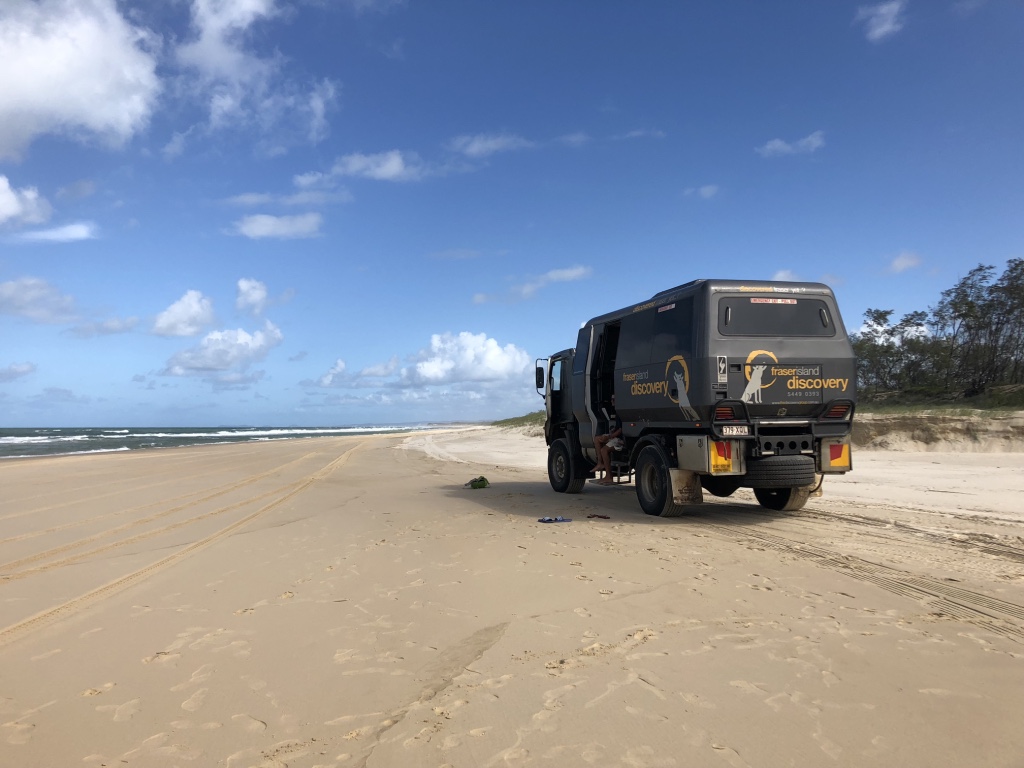
Our Fraser Island ‘bus’
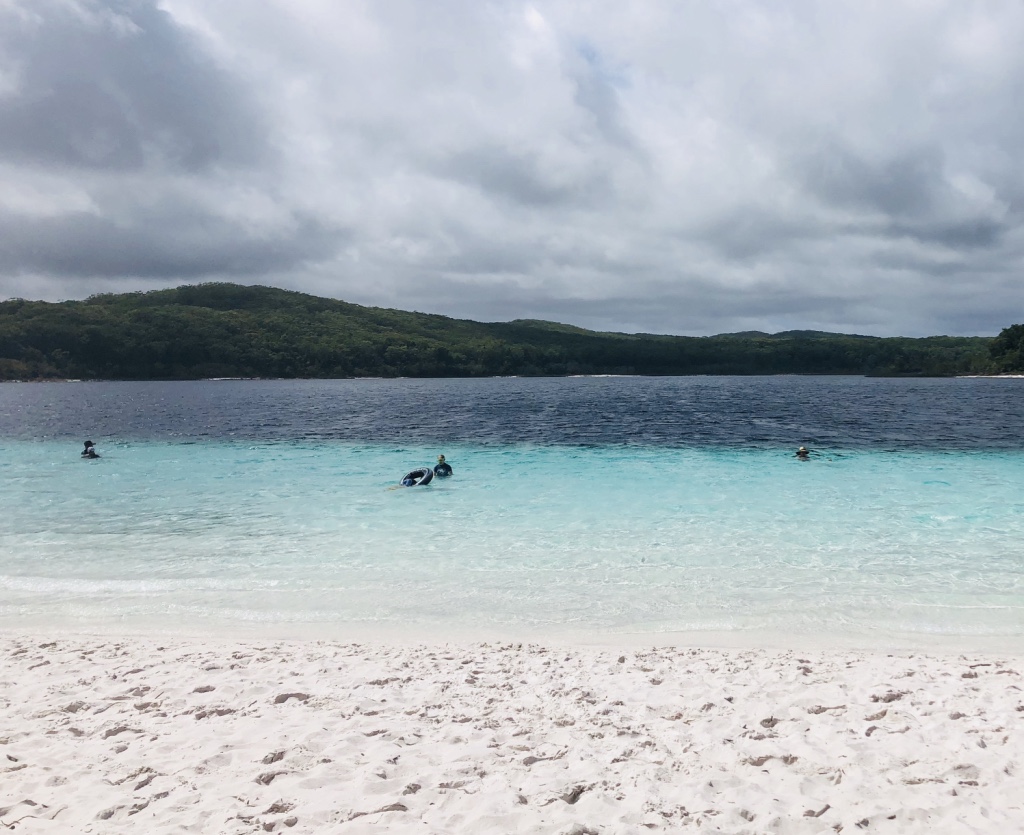
Lake Mackenzie
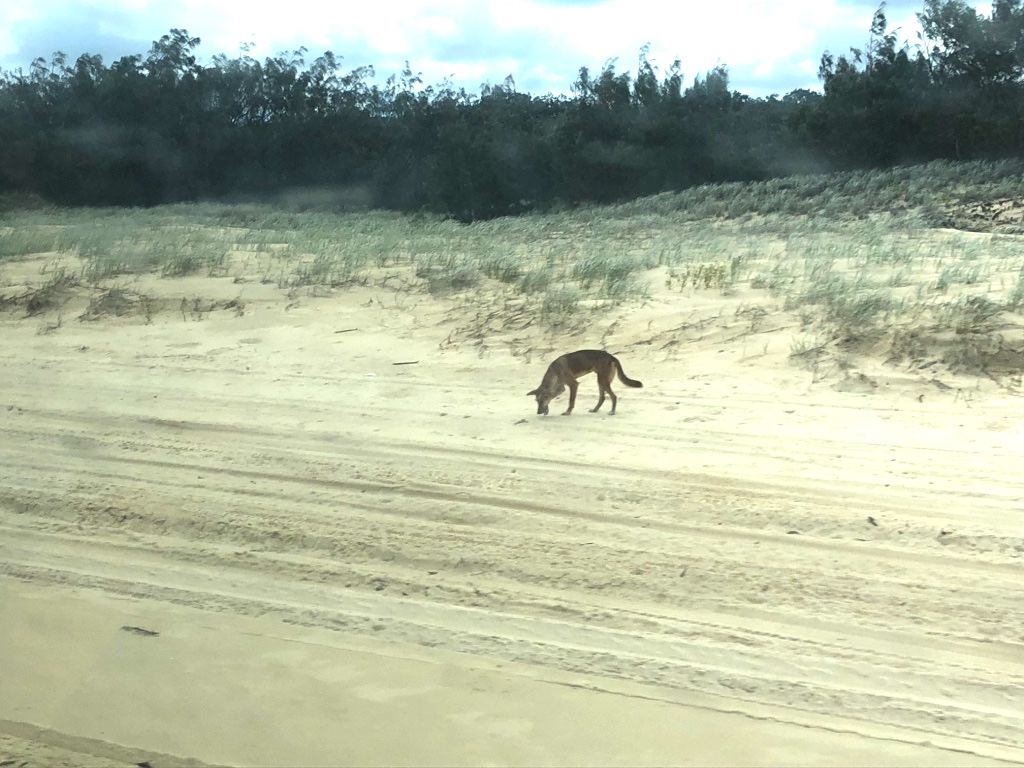
Spotted a dingo
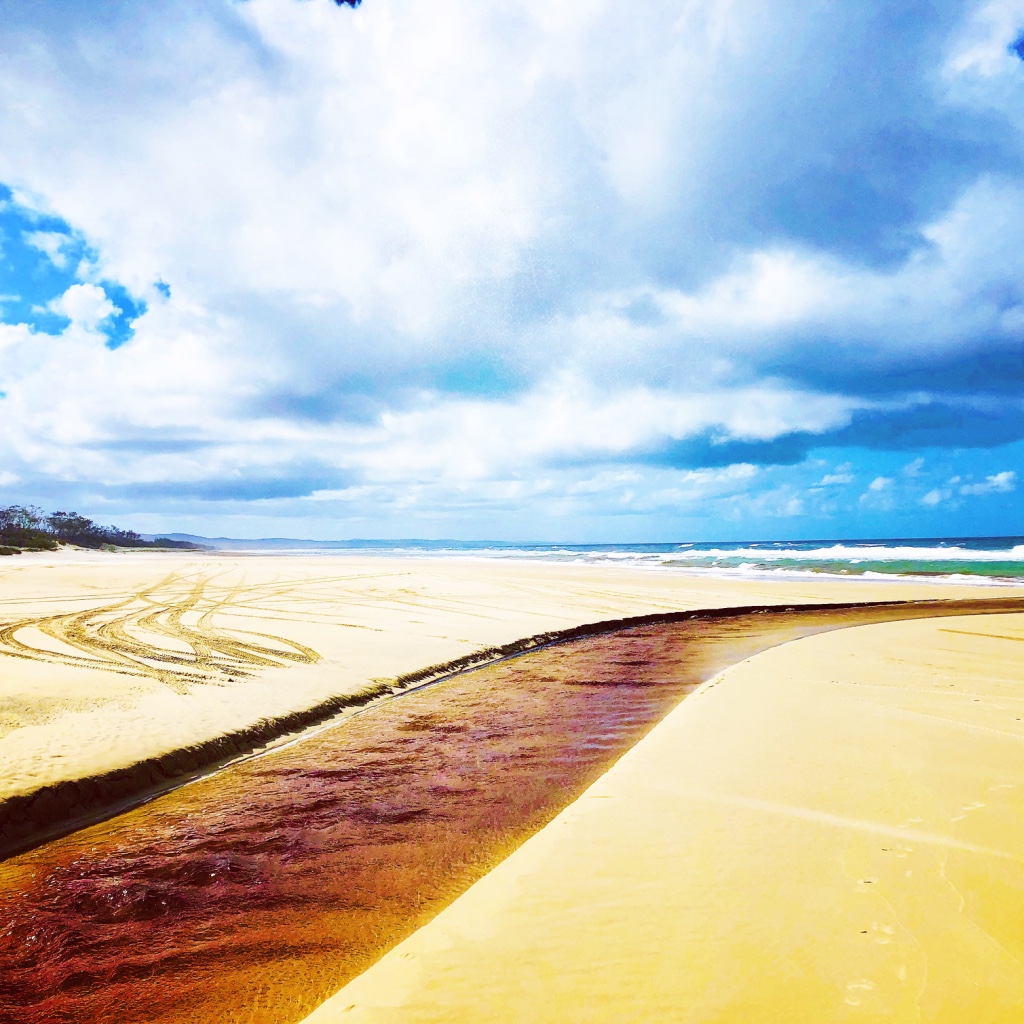
A red creek on the island made of sand
From the sandy delights of Fraser Island, we continued our journey further north to the small town of 1770. Between Shane and I, there was some confusion over the town’s history. We both agreed it was named 1770 because Captain Cook had landed there in 1770, but while one of us (who shall remain unidentified) thought it was the first place Captain Cook landed in Australia, the other was convinced Captain Cook had first set foot on the Australian continent at Botany Bay in Sydney. As usual, one of us was right, and 1770 turned out to be the second place Captain Cook visited, but the first landing in Queensland.
Today, 1770 is a small town known for its calm swimming beach on one side and its rougher surf beach on the other. We stayed at an interesting hostel, which claims on its website to be “so much MORE than a hostel”. Indeed, it seemed to be part-hostel, part-commune, where most of the residents were living for free in return for some very minor help around the place. It was similar to the ‘workaway’ concept which Shane and I benefitted from in Redbank Plains, only without the ‘work’ bit. As most people were long-term residents, it had quite a cliquey feel, and knowing we were subsidizing everyone else’s living costs meant I wasn’t particularly inclined to stick around.
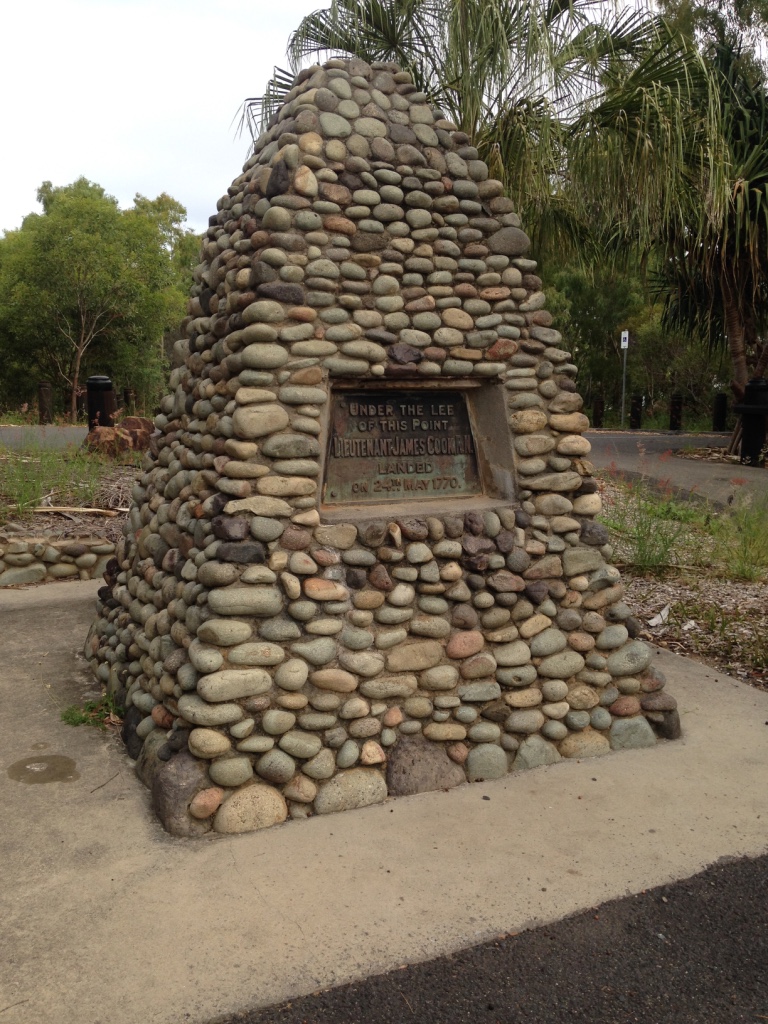
Captain Cook monument, 1770
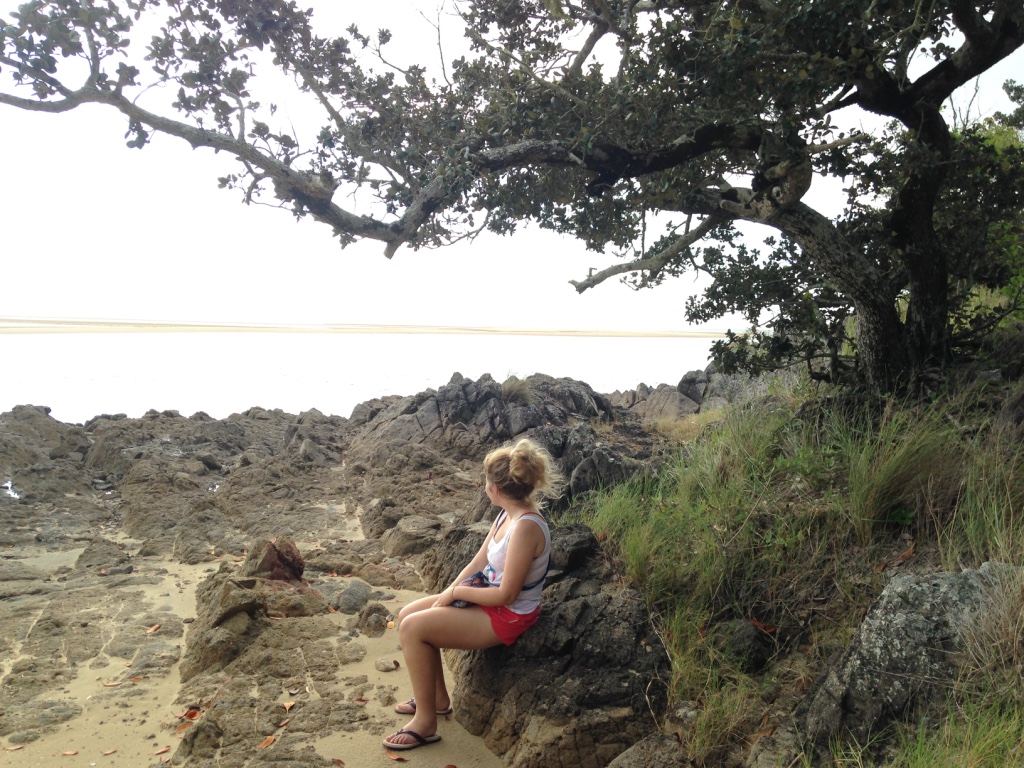
Imagining Captain Cook discovering Queensland in 1770
We had a long drive to our next destination so stopped in a little town called Marlborough for some food and a bed for the night. Marlborough was in the middle of nowhere, had a population of 350 people and there was one place to stay: the Marlborough Hotel. Our room for the night was cheap but it definitely wasn’t luxurious. We stayed at the back of the pub, where no one was overly welcoming, there was no wifi to speak of, and the electricity went off in the middle of the night and didn’t come back on. At 7.30am, a lady came into our room (I was still in bed), to tell us that we needed to be out by 9am. “But… it’s only 7.30, right?” I asked. “Well, yes” she replied. It felt as if we’d left the East coast of Australia and disappeared into the outback 40 years ago. We left, and hoped for a swift return to the present day.
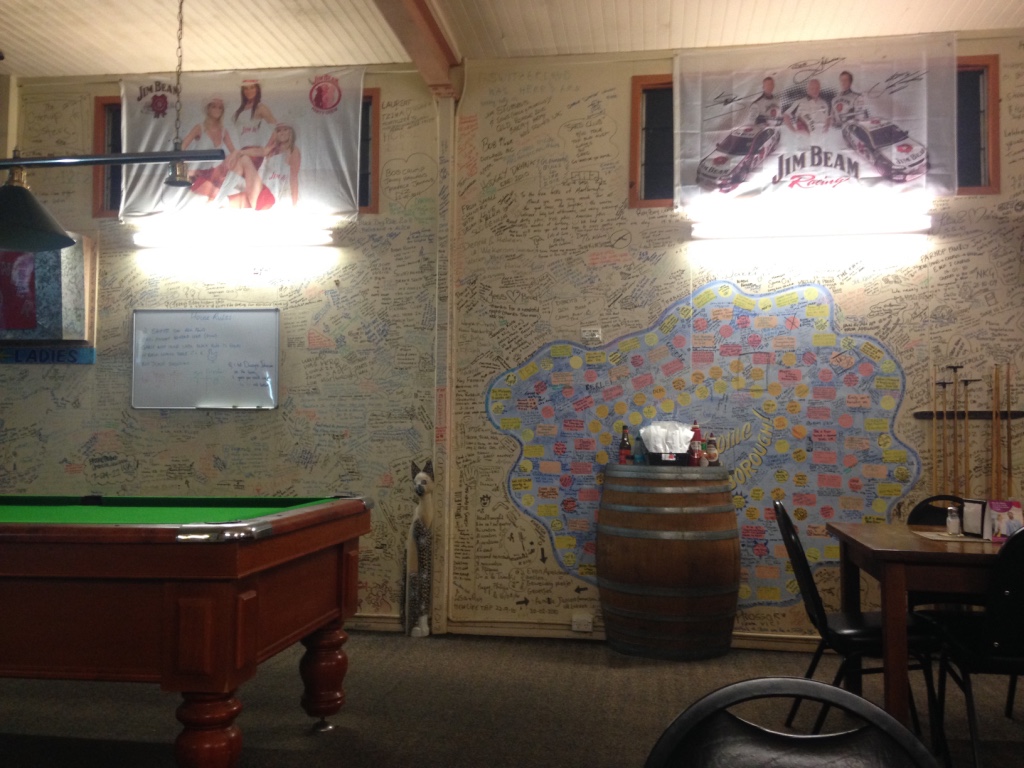
“Marlborough Hotel”
Unfortunately things didn’t improve on the next phase of our journey. We drove to Nebo, a small mining town about 100 kilometres inland, where our friend Annabelle is working at a mining camp. As we had been in no hurry to hang around Marlborough, we’d left earlier than planned, so decided we would have time to stop off at any interesting places on the way.
Sadly, we didn’t see anything to stop for. There wasn’t a single car or building for the first 100 kilometres of our journey, and not many more after that. The land was flat and dull.
When we reached Nebo (nearly three hours before we could see Annabelle), we found there was nothing to do there either. The town had a population of around 850 people, and although there was a museum, it was only open on Tuesdays, Thursdays and Saturdays. We had arrived on a Friday, so were out of luck.
Thankfully we had a lovely afternoon with Annabelle, exploring the town’s main attraction (the pub), and taking pictures with giant diggers, which made it well worth the little detour to Nebo.
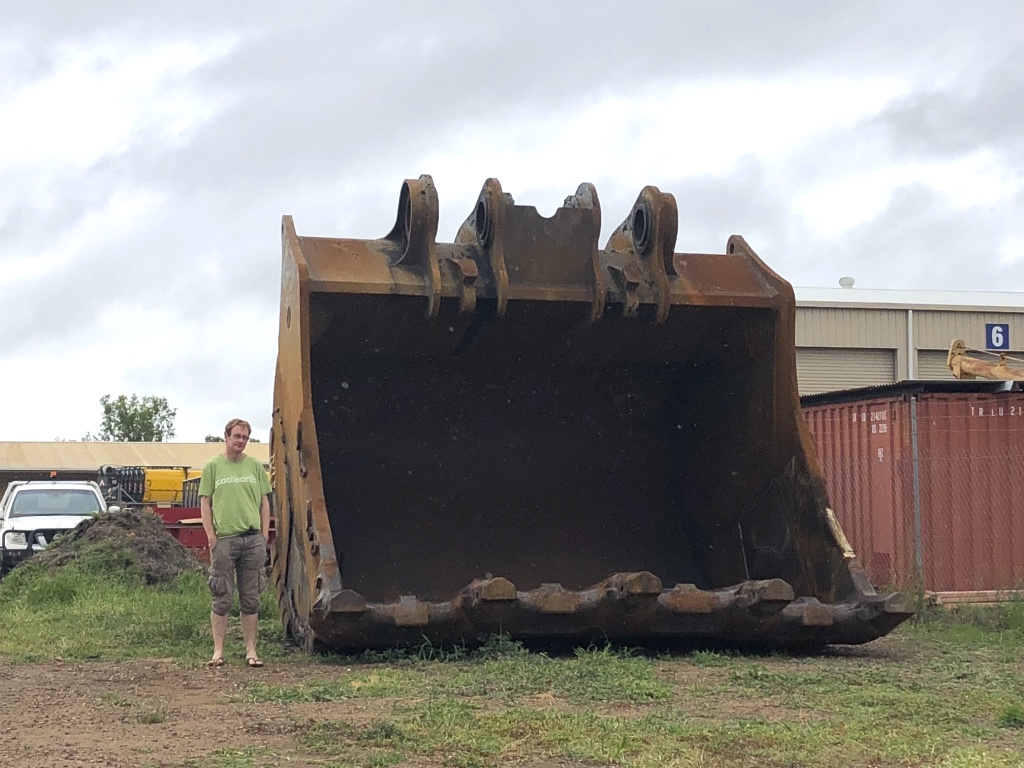
Shane and a giant bucket
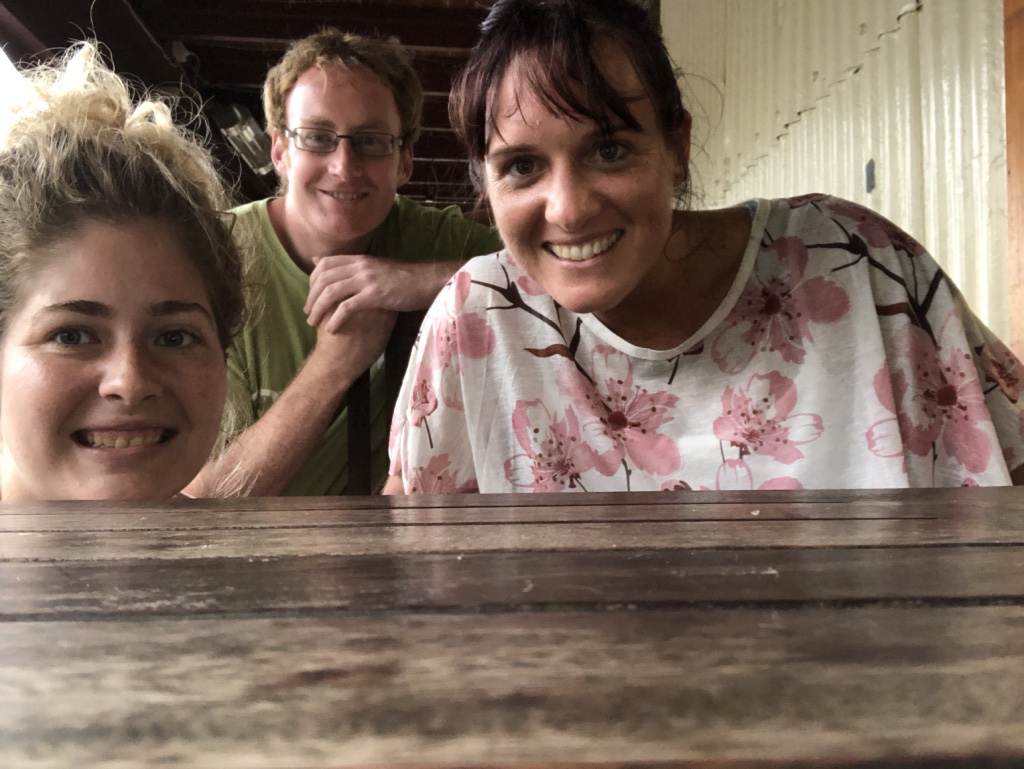
Attempted selfie with Annabelle
When we’d said goodbye to Annabelle, we continued our drive back to the coast in order to explore the Whitsundays.
I could write an entire blog post about our sailing trip to the Whitsundays, but to summarise, we essentially spent two days and one night on a rickety, smelly old boat in the pouring rain (thanks to Cyclone Nora), with a racist, sexist, generally unpleasant Captain. Between eyeing up the 18 year-old girls and telling disturbing stories about his great grandfather who is famous for murdering Aboriginal Australians, Captain ‘Kev’, also got very angry with all of us (the paying customers), for not laughing hard enough at his jokes or responding to his sexual advances. Lovely.
Sadly because of the rain and the extra rain, the Whitsundays weren’t looking especially spectacular. We tried to snorkel but saw mostly dead coral, and stopped at Whitehaven beach, which was beautiful but stormy. It was a big disappointment, as sailing around the Whitsundays was something I had really wanted to do, but by the end of the second day I was desparate to get back to dry land and away from horrible Captain Kev.
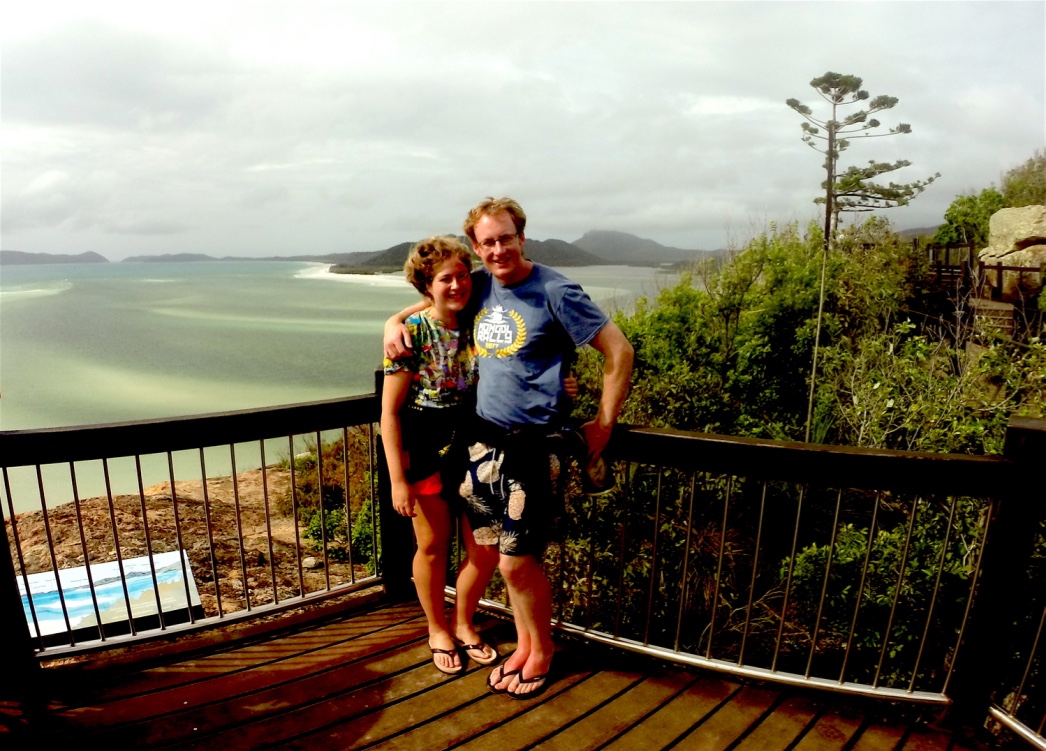
Overlooking Whitehaven Beach
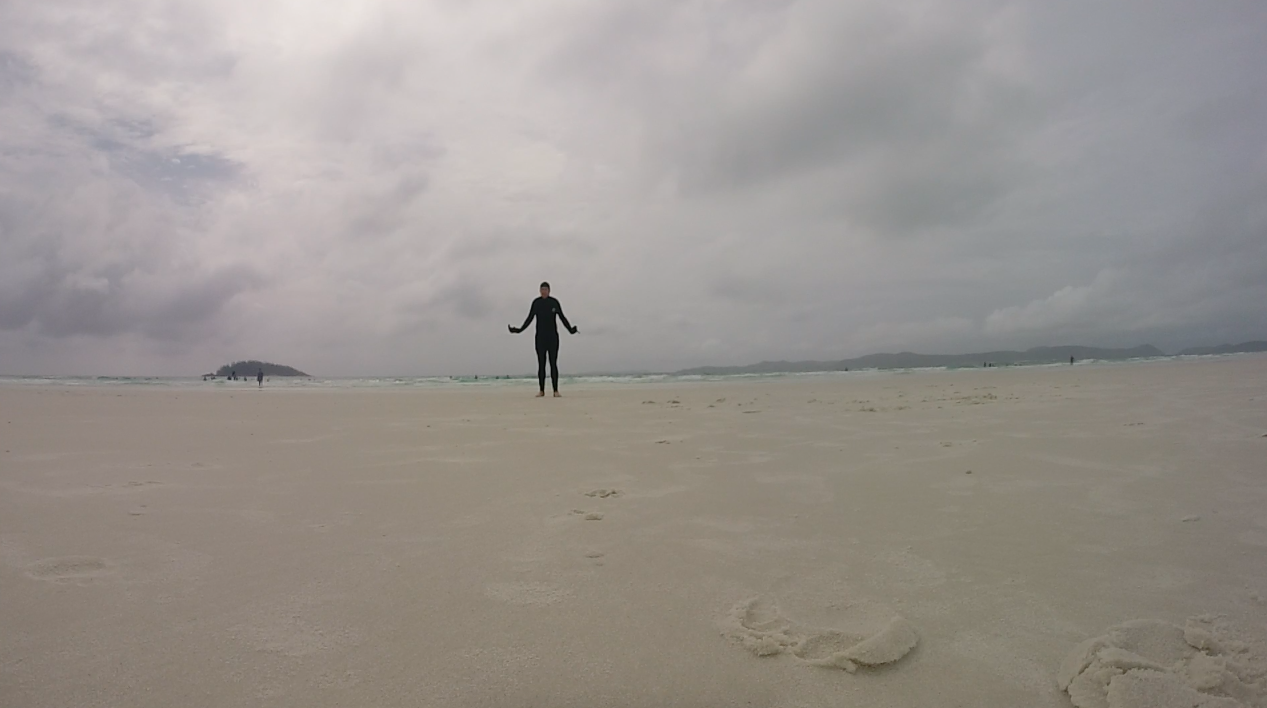
Shane rocking his sexy ‘stinger’ suit on Whitehaven Beach
As we continued our drive further north, the rain continued to fall. Stopping at McDonald’s in the small town of Ayr, we met up with another friend of ours from the U.K. and were reminded how lucky we were to have a car. That is because Dave, an old friend of mine who I worked with at Deloitte and travelled with in Southeast Asia back in 2009, has CYCLED from London to Australia, (read his excellent blog here) and is now completing his journey by cycling from Cairns down to Sydney. While we were complaining about the rain while travelling at 100 kilometres per hour inside our nice, dry car, Dave was out there (and is still out there) braving the elements and ploughing on with his epic journey. It was great to meet up with Dave after so many years, and to compare notes on Central Asia, long-term travel and the pros and cons of investing in bitcoin.
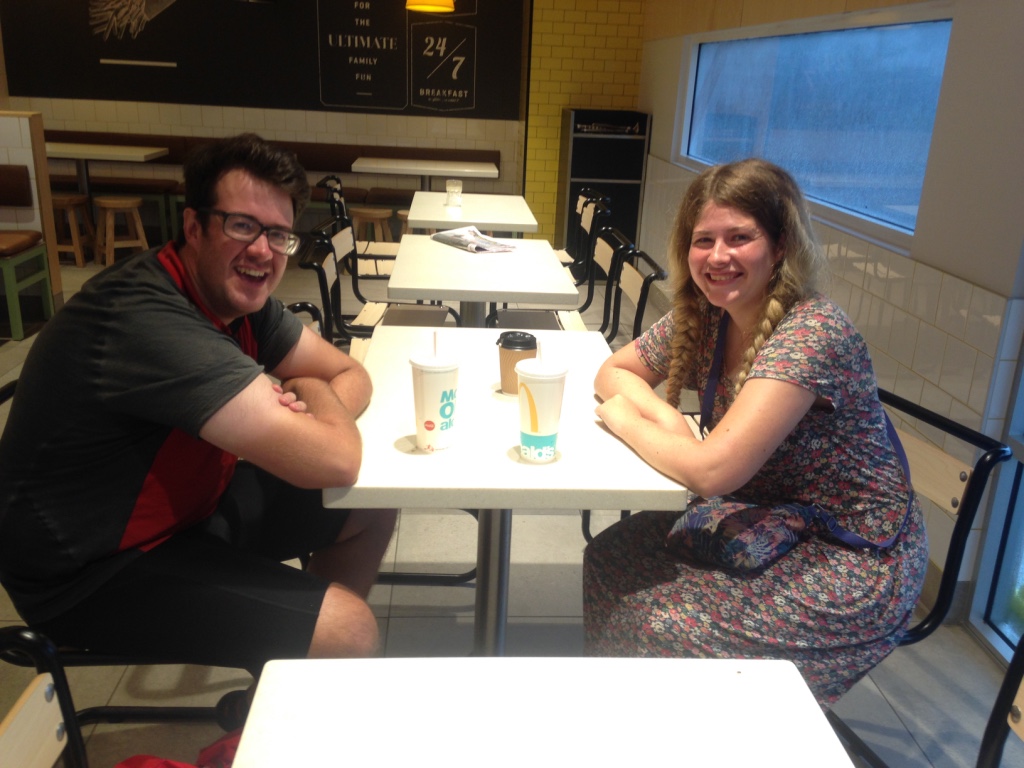
A McDonald’s meeting with bitcoin billionaire and cycling legend, Dave Bennett
Back on the road, we realized we had a problem. We had planned to drive another 300 kilometres north to Mission Beach, but the rain was still falling hard, and some helpful signs on the highway revealed that the road we needed to take was flooded and closed.
“Oh well.” Shane said, “We can just go another way.”
I studied the map hard, and then studied it again.
“The thing is,” I replied, “there is no other way.”
…
Australia is huge, distances are vast and the population of North Queensland is fairly sparse. While at home, or even driving through Central Asia, it is fairly easy to find an alternative route from one place to another, in Australia there is highway 1 (which circumnavigates the entire country), and in some places, there isn’t a lot else.
We drove as far as we could along Highway 1 until the road closed at Townsville, and stayed the night there. The next morning the road was still closed, the rain was still falling, and no new roads had opened up over night. We could stay in Townsville, waiting and hoping that the road might open in the next few hours or days, or we could skip Mission Beach, head inland and take a long and painful route up to Cairns and Port Douglas – the next stops along our route.
As our plans at Mission Beach had involved… well… going to the beach, and a trip to nearby Dunk Island (and going to another beach), and it wasn’t really beach weather, we decided to push on inland rather than to stay in Townsville indefinitely. Our new route was a significant detour (as, really, “there is no other way”), and added about 500 kilometers on to our total journey. It also involved experiencing a bit more of Australia’s vast landscape of nothing, although since meeting up with Dave I have a newfound appreciation of just how much worse all that nothing must be when you are cycling through it.
After a quick overnight stop in Cairns, we made it to Port Douglas, where we could rest, relax and enjoy snorkeling and diving on the Great Barrier Reef. Highlights included seeing a giant green sea turtle, two sharks and getting a photo with a jellyfish. We then spent two days in the Daintree Rainforest, enjoying the boardwalks, cruising for crocodiles, and sleeping in a kind of jungle camp with a swarm of mosquitos for company.
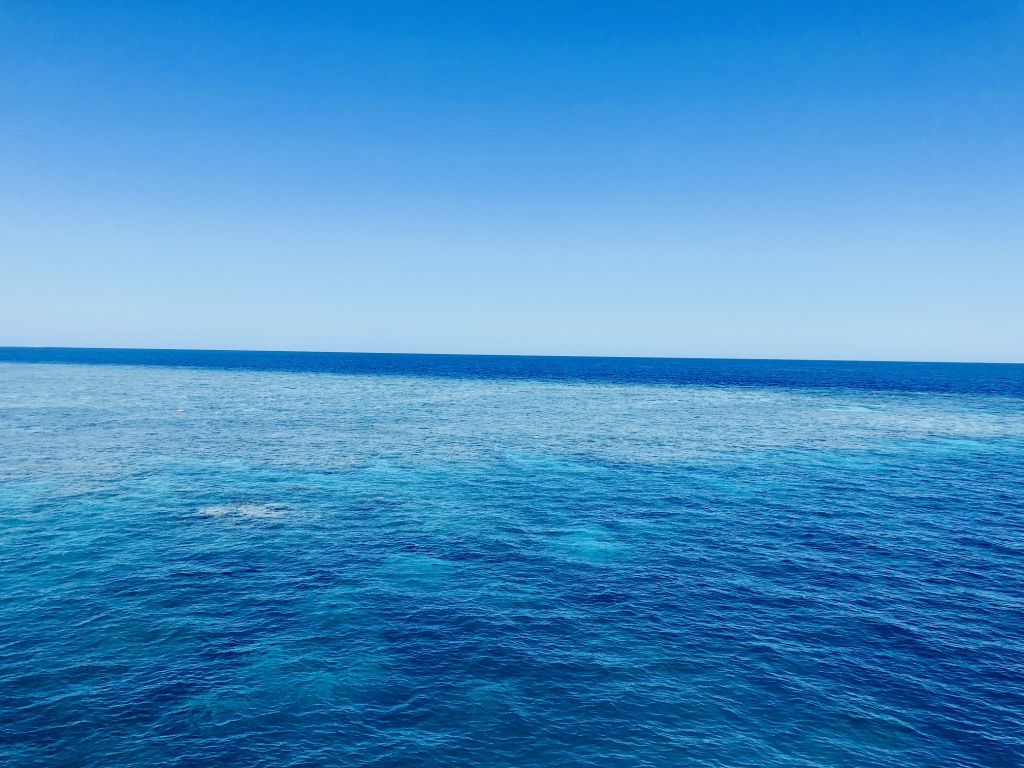
The Great Barrier Reef
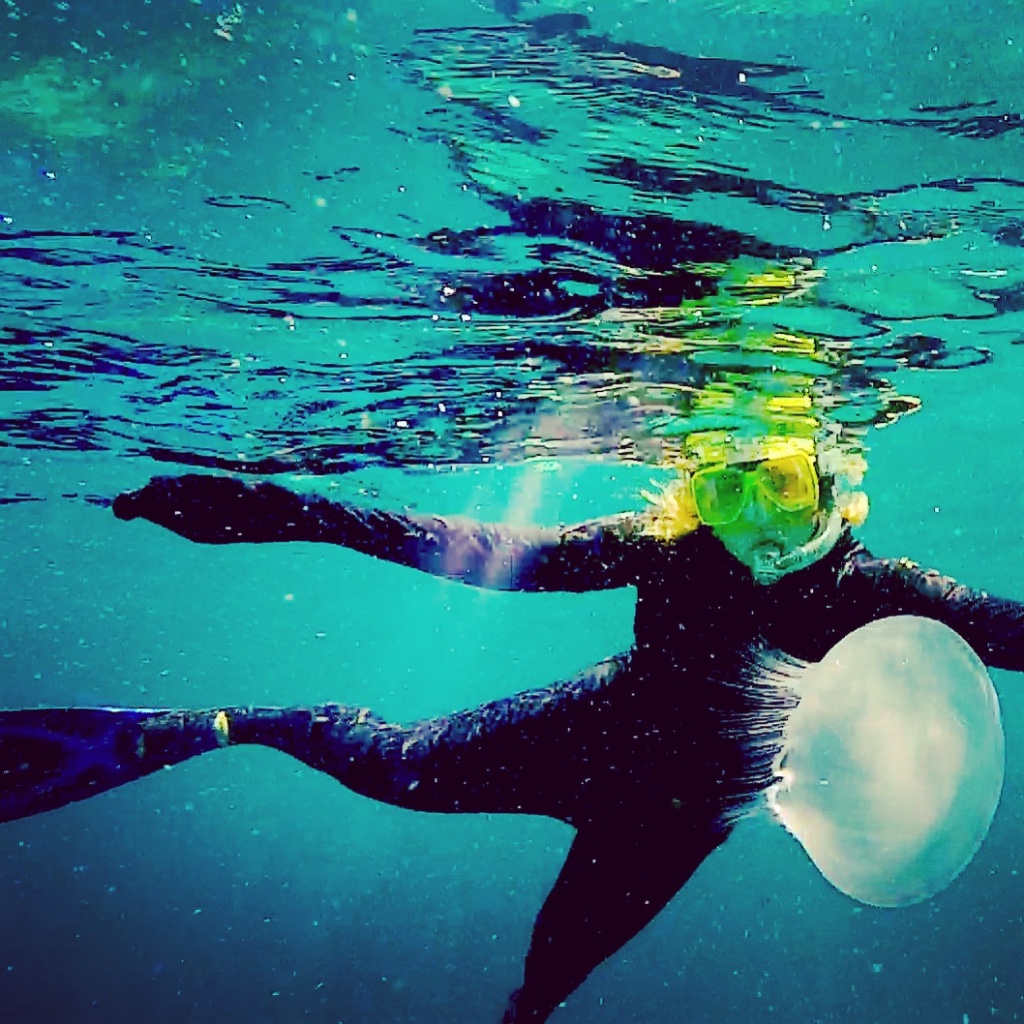
Jellyfish selfie
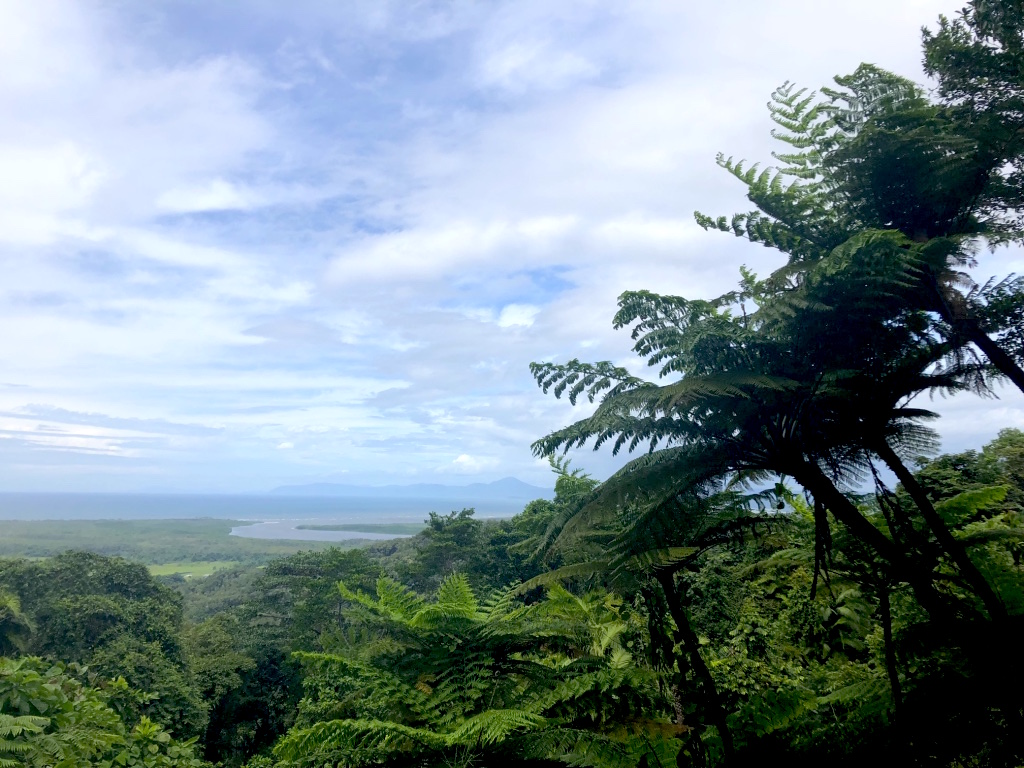
Daintree Rainforest
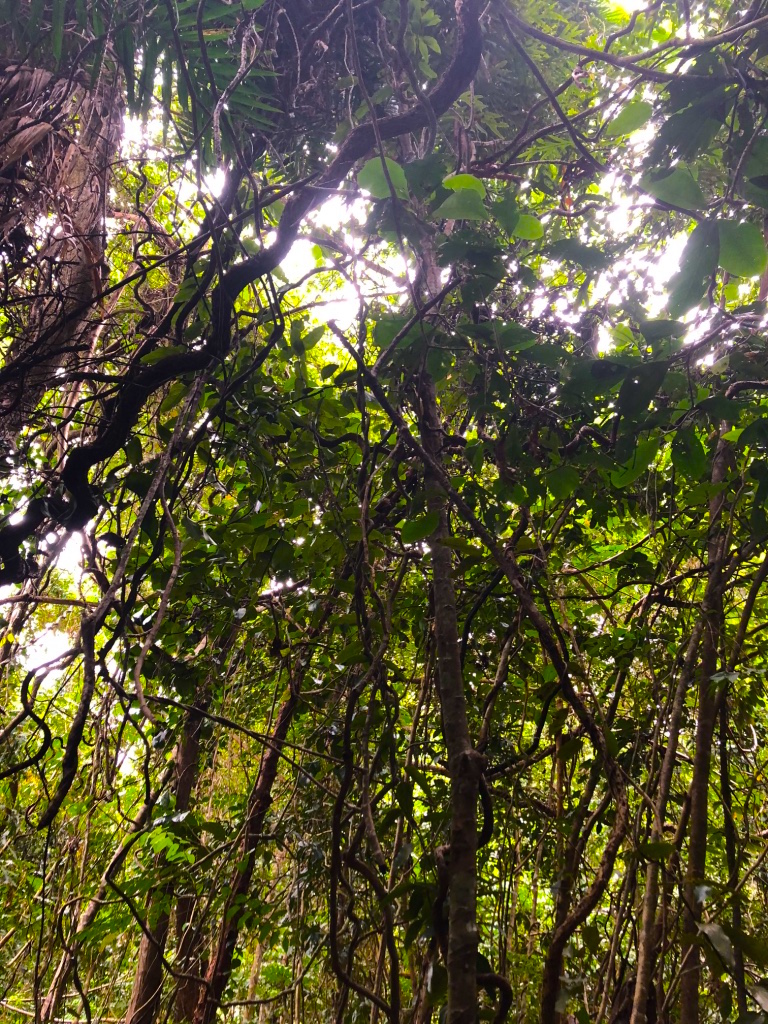
In the jungle
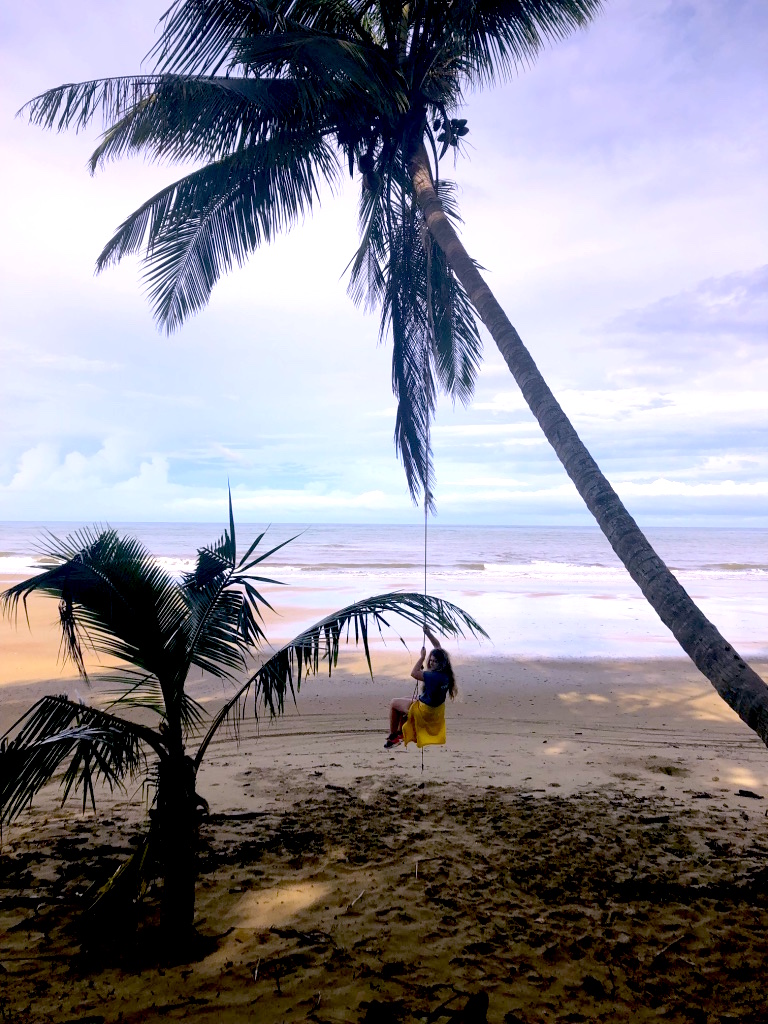
Not as fun as it looks
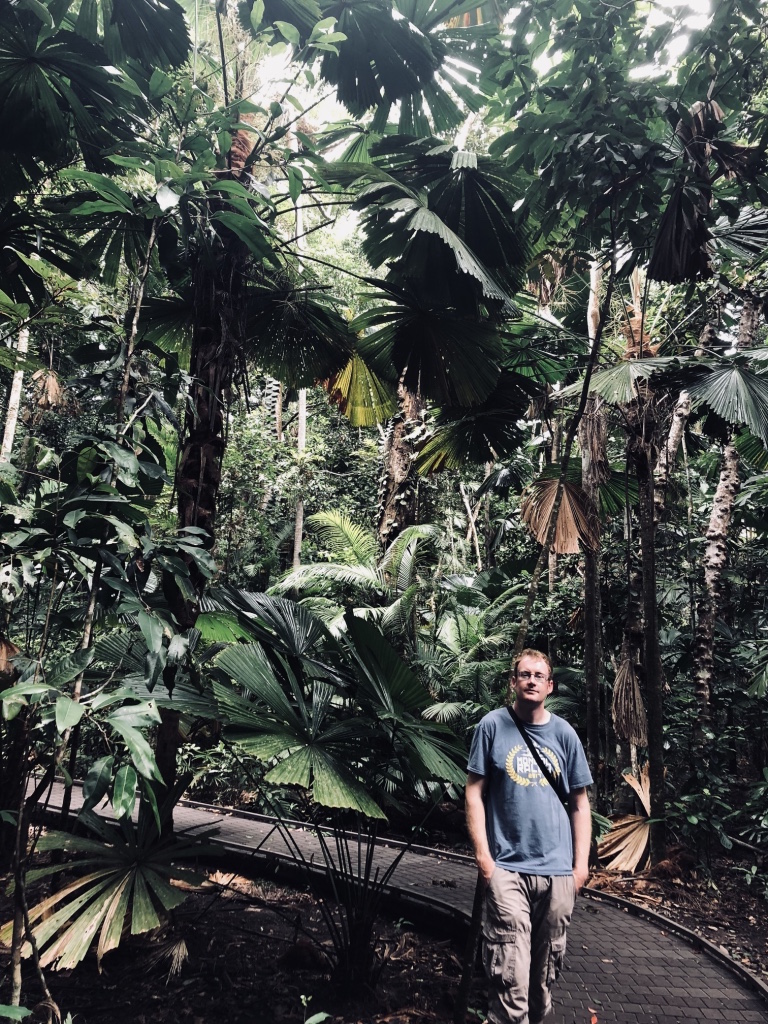
Shane loving the giant leaves
Leaving the Daintree Rainforest and the jungle camp behind us and returning to small but civilized Cairns, we were relieved to say goodbye to our insect friends.
Little did we know that our insect woes were only just beginning…
—
We arrived in Cairns and checked into an interesting hostel, called Geckos Backpackers. We had stayed at Geckos once before (for one night as an emergency stop on our way to Port Douglas), and had found it to be an OK place. For the same price as two dorm beds in pretty much any other hostel in central Cairns, we could get a twin room at Geckos, so we put up with the slightly weird owner (and the slightly weird vibe in general) for the sake of having our own space.
We stayed there for five nights altogether, and planned to spend our days snorkeling at the Great Barrier Reef, and completing a few last minute jobs before we embarked on our voyage across the Pacific Ocean. The first night passed without incident, but on our second day, I started to notice a few nasty and extremely itchy insect bites on my arms and legs. I had noticed a few flies and mosquitos in the kitchen where we’d been cooking our meals, so decided to lather myself with insect repellant, wear long sleeved tops and trousers, and stay away from the kitchen as much as I could.
On day three I woke up covered in red, itchy bites. Now they were all over my feet, legs, arms, hands, and shoulders. I even had some on my face. I counted well over 100 bites in total, and the itchiness was unbearable. I also started to wonder where these bites were coming from – had a mosquito from the kitchen found its way into our room and devoured me? Or perhaps there was something living in my bed?
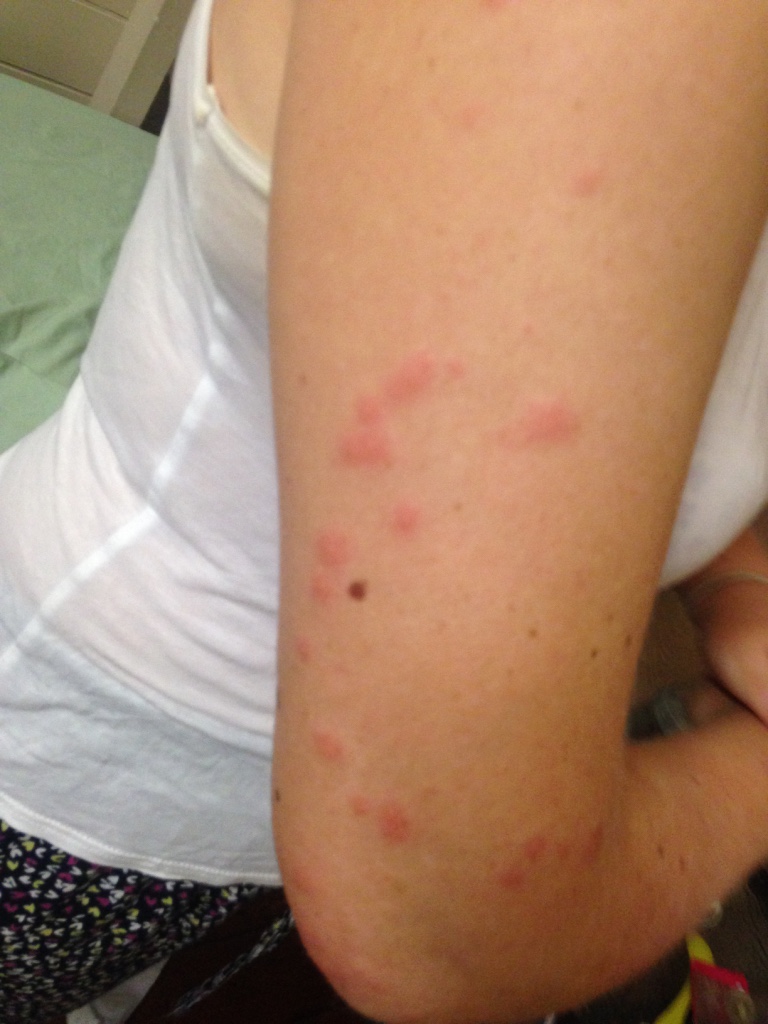
Something is eating me…
Despite travelling to over 60 countries and staying in hundreds of cheap, grotty backpacker hostels, I have only ever had one prior experience of bed bugs. One night in Morocco, my friend Rhiannon and I got into bed, and then noticed several tiny red insects scurrying across the sheets and making their way on to us, in order to enjoy a tasty meal. We jumped out of bed as quickly as we could, found the hotel manager (who had enjoyed a little too much to drink, and blamed the bed bugs on some Italians), had our pyjamas washed for us and swiftly moved to a new room, where we lay in bed cautiously acting as human bait and watching for more bugs. Thankfully, we escaped without being bitten, and never saw another bed bug again.
This time, I couldn’t see any bugs. No tiny red ones, no big black ones… nothing. I lay in bed, acting as human bait, waiting to spot an evil little bed bug. Still nothing. I discounted the bed bug theory, slapped on even more insect repellant, and went on with my day.
Later that afternoon, I was sitting on my bed, writing this blog, when I felt itchy again. Despite the layers of insect repellant and the obvious lack of any flying insects, a new series of bites was starting to appear up my arm.
I turned to Shane:
“Whatever it is that’s biting me, it’s living in this bed.”
Another human bait / bug-watch ritual commenced, and eventually, I found one. Just one solitary bug, very different from the ones I’d seen in Morocco, crawling across my bed. We trapped it in a cup, and googled images of bed bugs. It was definitely a bed bug. We went down to see the hostel owner, who took one look at my bites and knew immediately what the problem was.
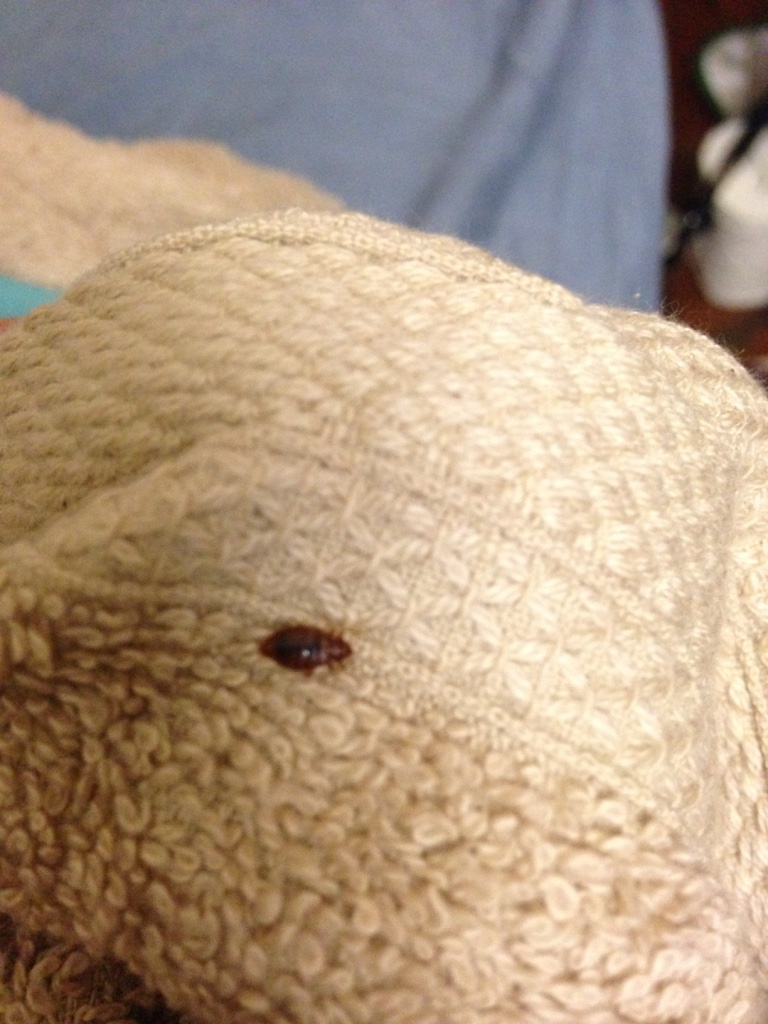
A solitary bed bug
“Which room are you in?”, he asked.
“Room 12”, we replied. He didn’t say much more. It seemed as though this might not have been the first bug problem he’d had in that room, although he didn’t spare us a lecture on how “backpackers bring these things in”, suggesting that this was all my own fault.
—
We’d already paid for our room upfront in cash, and there were no spare rooms available that night, so Shane and I spent the night in his bed, hoping that the bugs wouldn’t travel over. Unfortunately, his bed wasn’t a bug-free zone either, and after a thorough inspection Shane discovered two bed bug colonies: one living in each of our mattresses.
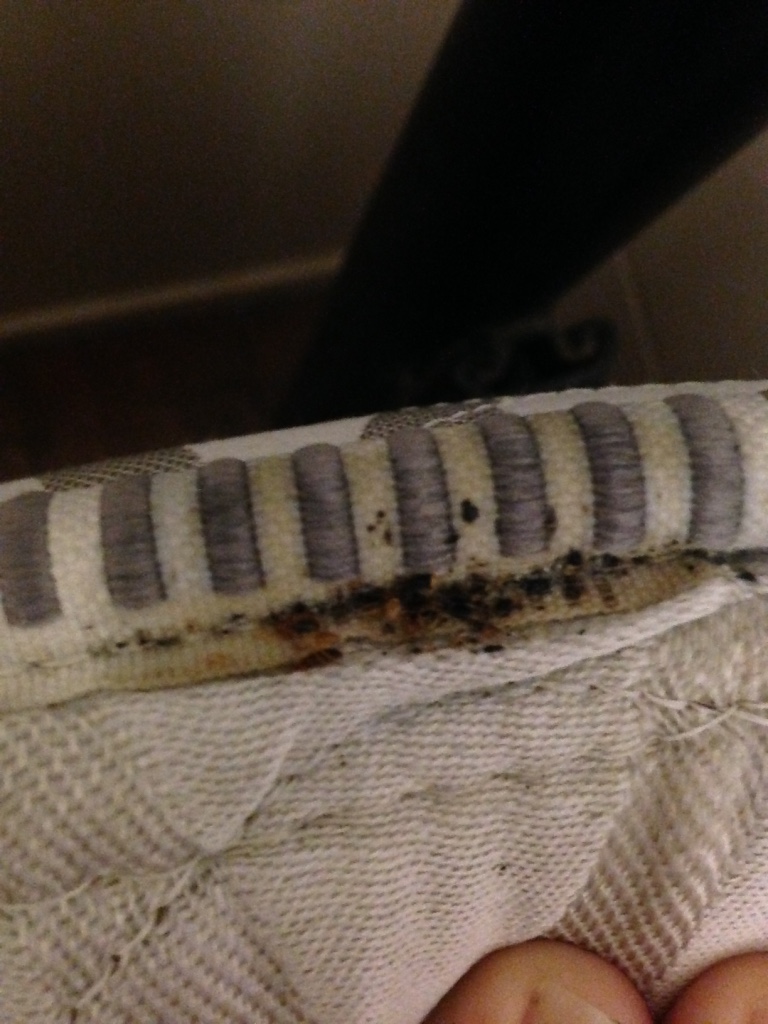
Bed bug colony
That night we were finally moved to a new room, but we didn’t want to risk bringing our new friends with us. We learnt that bed bugs die in the heat, so we left all of our possessions in our hire car for the day, hoping that the sun would heat them up to the bug-death temperature of 50 degrees. Then we washed them and dried them on hot temperatures, just to be sure. The lovely, helpful hostel owner gave us some money for the first load of washing (we had to do two), but nothing for the dryer and still insisted on charging 50 cents for washing powder.
We won’t be staying at Geckos Backpackers again. If you are ever in Cairns and looking for cheap backpacker-style accommodation, I suggest you don’t stay there either.
—
We are now back in the Blue Mountains for our final days in Australia, soaking up the sun and walking some beautiful trails, before we embark on our three week Trans-Pacific cruise back to New Zealand, French Polynesia, and Hawaii.
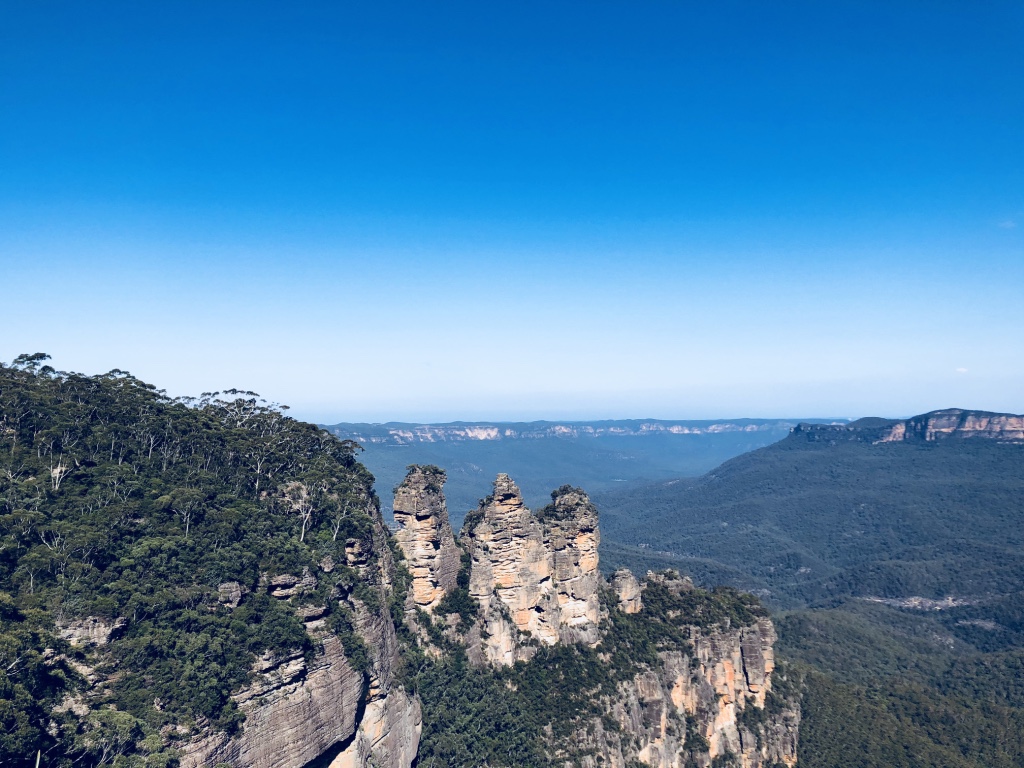
The Three Sisters at the Blue Mountains
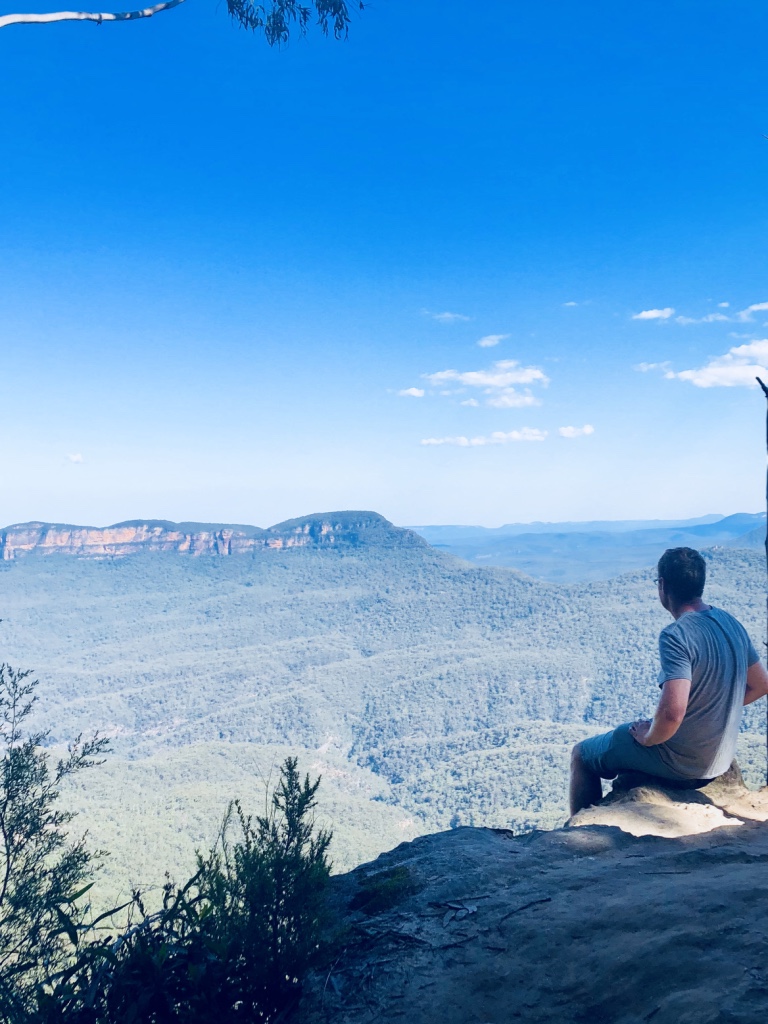
The Blue Mountains
Our extra four weeks in Queensland haven’t been exactly what I expected. Rather than blue skies, beautiful beaches and a longed-for ‘holiday within a holiday’, the weather has been dominated by cyclones, the beaches have often been off-limits, and we have been confronted with power cuts, nothingness, bed bugs and racism/sexism/general unpleasantness that we didn’t expect. There have been good times as well as challenging times, but I am glad we returned to get the ‘full Queensland experience’, as it brings home the fact that while we have really enjoyed our time in Australia and there are some truly beautiful places, it’s not always sunny, it’s not perfect, and ultimately, it’s not where we want to live forever.
Nonetheless, since we first touched down in Cairns on New Year’s Day three months ago, we have had a brilliant time. We’ve driven nearly 12,000 kilometers around Australia and New Zealand; all the way between Cairns and Melbourne, around Tasmania and from Christchurch to Auckland.
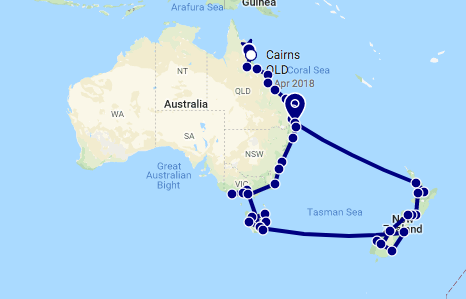
Our route around Australia and New Zealand
We arrived unsure of our plans for 2018 (and for the rest of our life), and we are leaving with more clarity, more confidence and more certainty about the immediate and longer-term future.
We are now entering a new phase of what has become our round-the-world honeymoon: a trip across the South Pacific Ocean.
